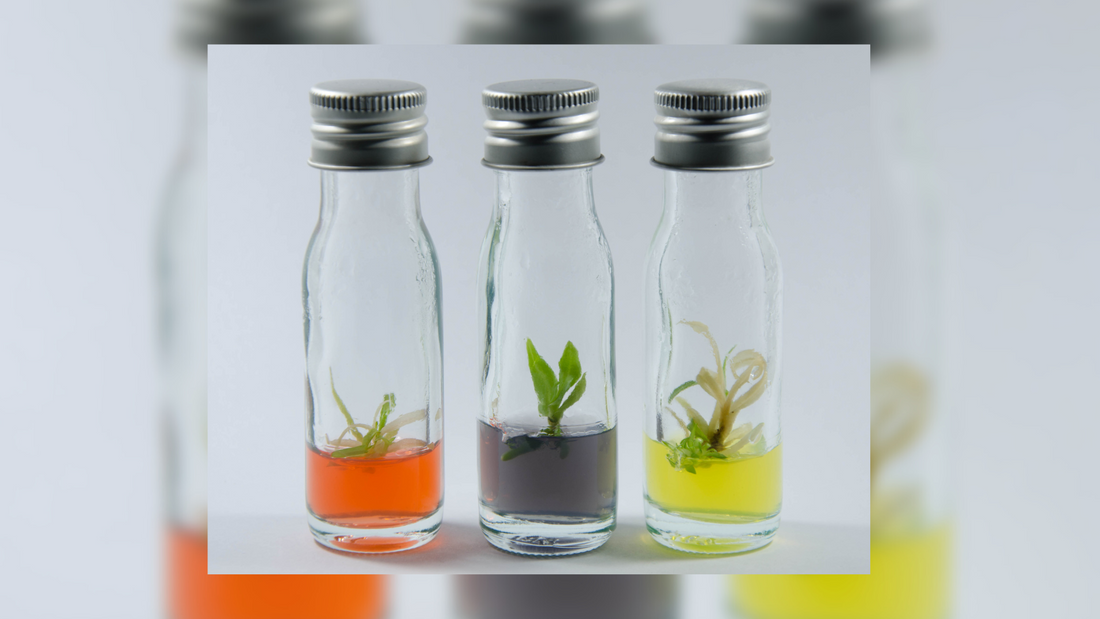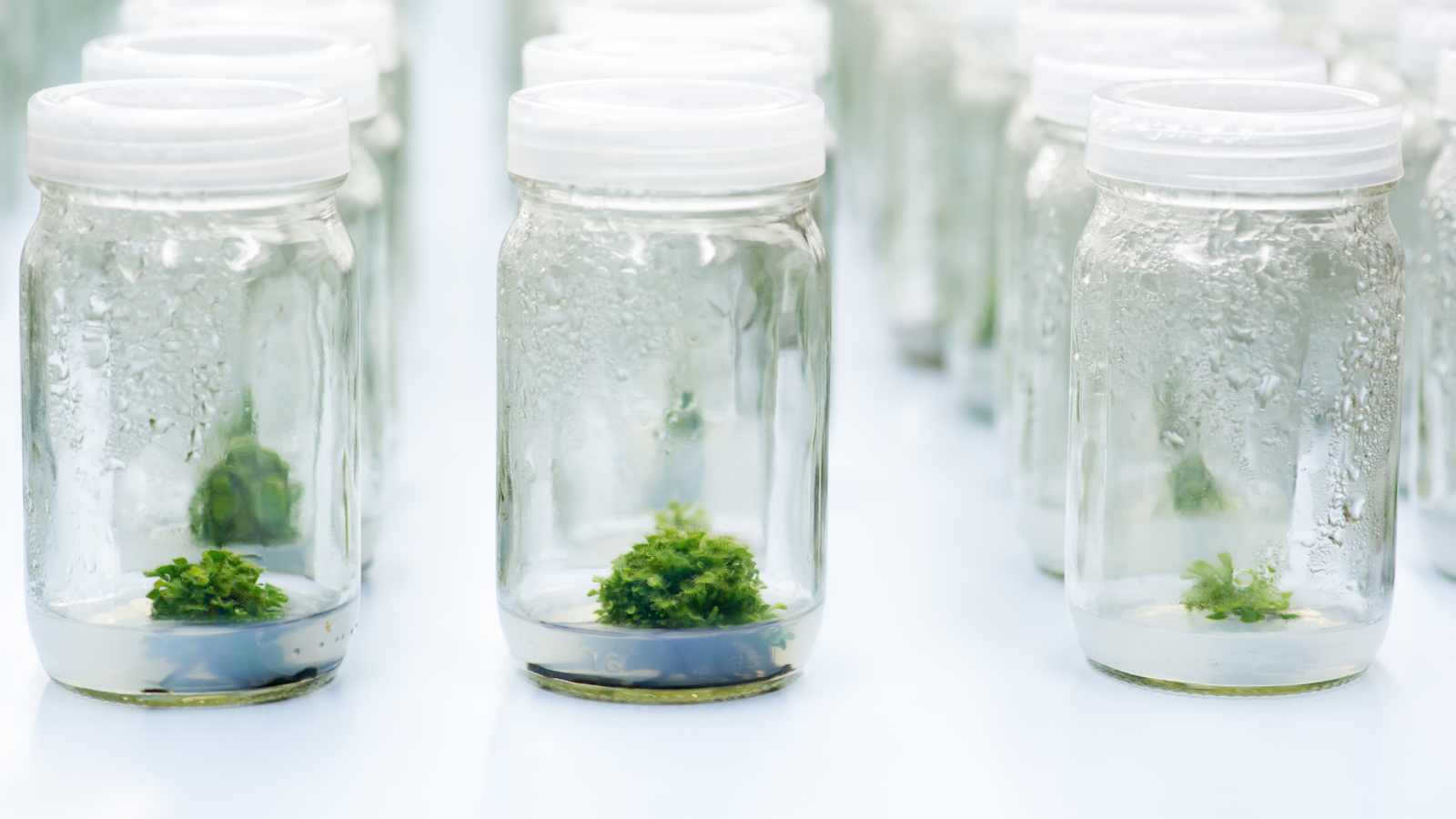
Applications of Organogenesis
As a content and community manager, I leverage my expertise in plant biotechnology, passion for tissue culture, and writing skills to create compelling articles, simplifying intricate scientific concepts, and address your inquiries. As a dedicated science communicator, I strive to spark curiosity and foster a love for science in my audience.


Organogenesis: Introduction
Organogenesis in plants is the regeneration of plant organs using a mass of cells or a few tissues. In tissue culture, it’s an essential technique to regenerate a whole plant. The two phases involved in the process include:
- Dedifferentiation: It’s a cellular process in which a cell returns to a less differentiated or simpler stage from a specialized or complex stage within the same lineage. It begins shortly after the explant is cut and isolated from the mother plant and introduced to a suitable media for callus formation.
- Redifferentiation: It’s the process in which plant cells reach maturation, to attain certain functions, by the process of differentiation and stop dividing any further. In tissue culture, the process is known as budding, which comes after callus formation. The unorganized mass of tissue (callus) results in the formation of organ primordia through differentiation, which leads to the formation of a meristem filled with protoplasm and large nuclei. The specialized meristem cells then lead to the formation of different organs through differentiation.
The regeneration of plants through organogenesis is of special interest to researchers performing mutagenic studies. Chemical mutagens or ionizing radiation are used to introduce mutations or cause genetic variability in plants for research purposes.
In this article, we’ll dive deep into the types of organogenesis, their advantages and disadvantages, and their applications in labs and plant industries.

Figure: Plant regeneration via organogenesis.
Types of Organogenesis
The organogenesis technique is of two types:
-
Direct Organogenesis
The process of the development of plants' organs and then the regeneration of plants in vitro, without any intervening callus formation stage, is known as direct organogenesis. The technique has been widely used to increase the rate of multiplication of plants, production of transgenic plants, and clonal propagation. -
Indirect Organogenesis
In tissue culture, when the plant organs are developed and plants are regenerated through a mass of unorganized cells (callus), the process is known as indirect organogenesis. The process is profoundly used in transgenic plant production.

Figure: An illustration of the types of organogenesis.
In both approaches, three common phases are involved, which include:
- In the first phase, the differentiated or specialized explant cells become undifferentiated or return back to a simpler stage by responding to hormonal signals.
- In the second phase, the explants form specific organs under the influence of phytohormones for plant hormones.
- In the third phase or last phase, organ development is independent of phytohormones or plant hormones, which means roots and shoots of the plants are developed after removing hormones from the culture media.
Factors Affecting Organogenesis
Many factors affect the in vitro organogenesis process. Some of these are auxin and cytokinin balance in the culture media and specific culture conditions.
Explant
Many types of explants are used to induce in vitro organogenesis in plants such as petioles, stems, leaf discs, embryos, and protoplast. Against the saying one size fits all not all tissue support the growth organogenesis in all plants. For example, strawberry leaf discs are used to induce organogenesis and in the case of Crysanthemum leaf discs have been successfully used to induce organogenesis. Further, the size, age, and source of the explant also influence the in vitro organogenesis process.

Culture Conditions
Proper light, temperature, and humidity influence in vitro organogenesis of plants, mainly in shoot regeneration. For example in the case of strawberry shoots darkness favors in vitro organogenesis. Also, the blue region of light induces shoot formation, and the red region influences root development in vitro plants.
Plant Growth Regulators (PGRs)
The amount and type of PGR have a major influence on the in vitro organogenesis of plants. Especially a Perfect Combination or ratio of auxin and cytokinin is essential for the successful organogenesis or regeneration of plants.

Advantages and Disadvantages of Organogenesis
Like every process, organogenesis has also some advantages and disadvantages. some of them are given here.
Advantages Of Organogenesis
- Organogenesis is an effective technique to induce exhilaration shoots in plants in vitro.
- The organs developed through Meristem has lower chances of undergoing mutations.
- Direct organogenesis is an effective and efficient approach to induce clonal propagation with high fidelity.
Disadvantages Of Organogenesis
- One of the major concerns of in vitro organogenesis is that it can induce somaclonal variation in plants.
- The procedure of in vitro organogenesis is only available for a limited plant species, especially since it is not available for many recalcitrant varieties.
- Organogenesis is a time-consuming process.
- To work with organogenesis you need to have some hands-on experience with the technique.

Uses of Organogenesis Technique
Organogenesis has applications in Research, genetics, cell biology, biochemistry, and industrial areas. Here are some of the applications that extensively utilize this advanced technique:
- Organogenesis has major applications in the production of transgenic plants.
- Propagation of plants using meristematic tissues is a great way to achieve viral-free plants.
- Organogenesis is a powerful technique to understand cell and tissue-type differentiation, the mechanism of the action of hormones and other plant growth regulators, the initiation of the development of plant organs, and other molecular mechanisms of the plant.
- It’s an effective technique to improve plants for the production of primary and secondary compounds for research and pharmaceutical purposes.
- For mutagenic studies in sexually and vegetatively reproducing plants, organogenesis is an effective technique.

Interested in Learning About Tissue Culture? We Can Help!
Plant Cell Technology is helping tissue culturists worldwide by providing unique and world-class products and services that smoothen their process. The PCT Store has MS media, agar, gellan gum, Plant Preservative Mixture (PPM™), culture vessels, Biocoupler™, and masks in its store to facilitate your processes.
And, that’s not it! Plant Cell Technology also offers consultation services to culturists of all sizes that help to get instant solutions to your tissue culture problems.
You can either book a one-on-one consultation call or a physical visit to your lab. We help you at every step of the tissue culture process, ranging from establishing a tissue culture lab to preventing contamination problems or any specific challenges in your process.
Further, in the coming month, we are conducting a range of Master Classes for tissue culture enthusiasts like you. The class offers you the great opportunity to directly learn from the experts in the area, who have 10-30+ years of experience.
So, visit plantcelltechnology.com today and learn more about our products and services and how they help you excel in your tissue culture processes.
Happy Culturing!
Blog Categories
View by Level
Popular Blogs

How Samantha Bridges the Gap Between the Nursery and the Lab
The Introduction Building a tissue culture program from the ground up requires more than just scientific knowledge—it requires the grit...
Read More
Understanding The Synthetic Seed Technology
Introduction Let’s be honest: traditional plant propagation can be a logistical nightmare. If you’re working with recalcitrant species—those stubborn plants...
Read MoreSubscribe to Our Newsletter








Join the conversation
Your email address will not be published. Required fields are marked